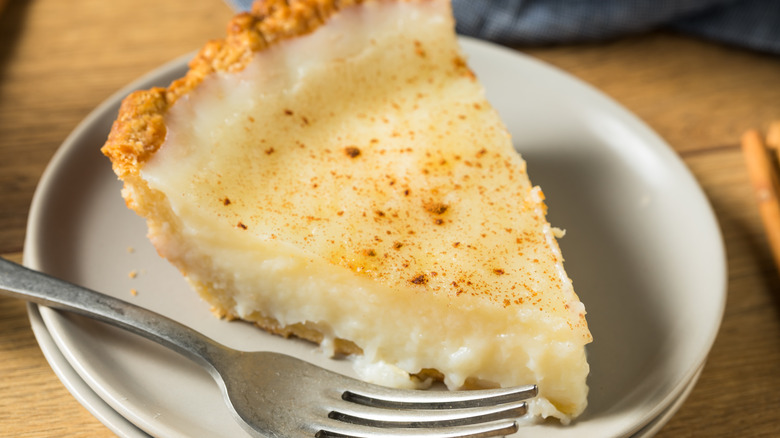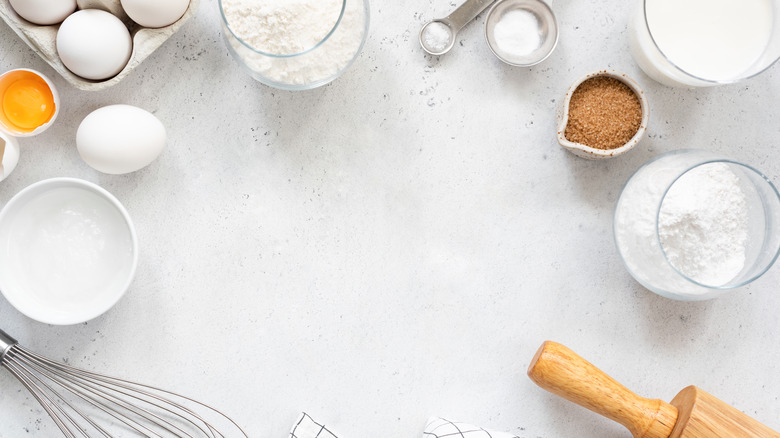Vinegar Pie Is The Depression-Era Dessert That Should Make A Comeback
Apple and cherry pie might be considered American classics, though neither is actually all that American in origin. For a real national dish, a better argument might be made for vinegar pie, a Depression-era food that's tastier than it sounds. Also, while we're on Depression-era desserts, let's not forget water pie, vinegar pie's cousin that uses similar ingredients but nixes the sour splash.
While the 1929 stock crash changed American history and ravaged the economy, it also led to cultural shifts that contrasted the excesses of the '20s. During the Great Depression, people were forced to get creative in the kitchen, using whatever was on hand or could be bought for cheap. The frugal cooking philosophy of the 1930s produced (or at least popularized) classics like dandelion salad, navy bean soup, and the poor man's meal. At the time, using simple building blocks to make delicious meals allowed people to experience good food without paying a premium for it.
No one's sweet tooth went away, either; so a large variety of simple dessert recipes arose during the period. Some of these recipes, like the timeless classic bread pudding — originally made to use up stale bread — have since gotten highbrow makeovers. Vinegar pie hasn't quite seen its due in this department yet, though it is one of the era's most well-known and deliciously simple desserts. The story of vinegar pie goes back to the 1800s and was described in a Colorado local newspaper in 1905 as being served cold and topped with a meringue.
Of course, maybe you're skeptical because of the name. While you'd be right to assume that the pie contains vinegar, that doesn't mean it's not worth a try.
How vinegar pie is made
Vinegar pie is as simple as it is affordable. Making the pie crust is Baking 101, though many recipes call for starting with a pre-baked frozen crust. The basics of the filling are eggs, flour, water, sugar, butter, and vinegar (either apple cider or white distilled). You can also add in vanilla, brown sugar, cinnamon, and nutmeg for more flavor, along with a pinch of salt.
First, you melt the butter and mix it with the other filling ingredients, including the vinegar. Next, the filling mixture is brought to a simmer and placed on medium-low heat. The filling is done when it can coat the back of a spoon. Then, let the filling cool for a few minutes before pouring it into the pie shell. Lastly, it is baked for just under an hour until the filling sets. You can also add meringue, nuts, or whipped cream on top of your pie for a garnish that complements the tangy, sweet, and sour flavor of the pie.
Another popular version of vinegar pie is Grandma Pruit's recipe, which calls for making the pie in a cast iron skillet, laying down small strips of pie dough, and layering it with sugar, butter, and the other dry filling ingredients (usually nutmeg). This mixture is then covered with a sheet of pie dough. Finally, a mixture of hot water and vinegar is poured through a slit in the dough and the pie is baked. When you have a bite of this one, you'll wonder why more people aren't giving this dessert the post-COVID, food inflation-era spotlight it deserves.

